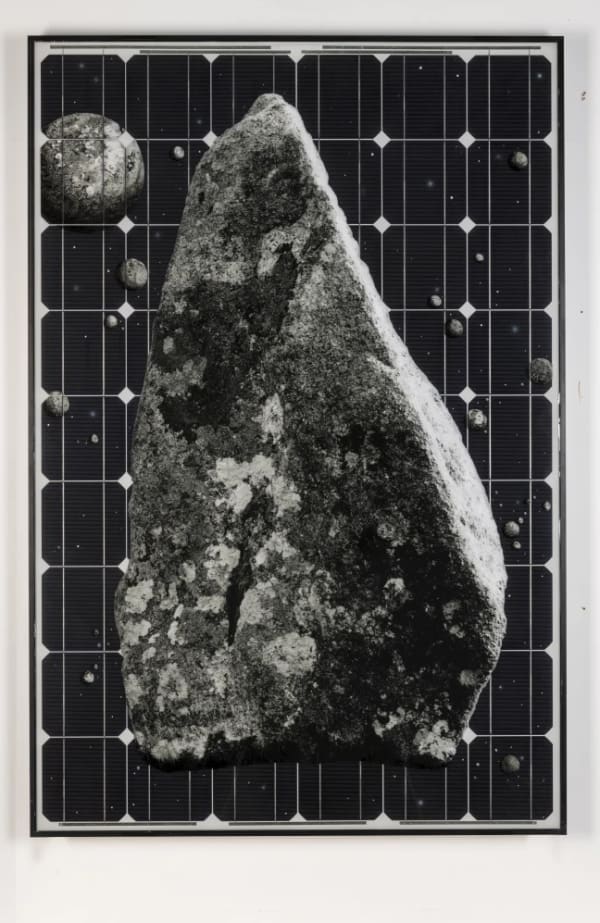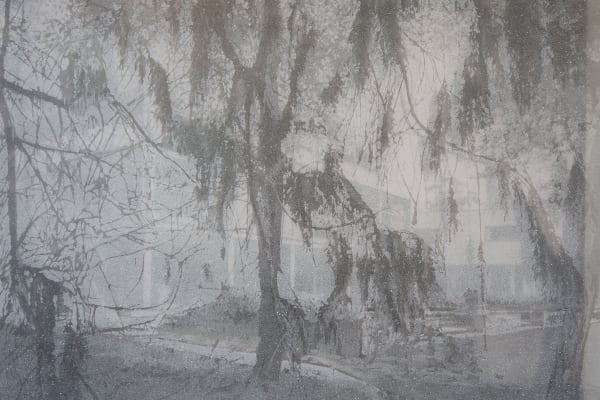Alex Hartley: The world is still big
Victoria Miro is pleased to present Alex Hartley's most recent culmination of his on-going investigation into dystopian architecture, secular habitation and the construction of sanctuary as an inherent drive to form refuge from the world. Hartley returns to his previous lines of investigation; community, belonging and isolation, and counter culture versus establishment, however with a clear and decisive shift in presentation and form. Hartley's work has become much more focused on the complex and often contradictory attitudes toward the built environments. Gone are the idealised Case Study houses, to be replaced with architectural emblems of the counter culture movement, including the iconic Buckminster Fuller geodesic dome. All this in an ever more desperate quest to occupy uninhabited landscapes and wilderness.
-

Alex Hartley is a recipient of the 2025 Paul Hamlyn Foundation Award
November 14 2025Alex Hartley has been named a recipient of the Paul Hamlyn Foundation’s 2025 Awards for Artists, the largest individual arts awards for visual artists and...Read More -

Alex Hartley speaks to Fakewhale
September 15 2025'I am aware of the presence of the viewer as the missing element in the work I make... I consciously leave space for them.'Read More -

Alex Hartley’s new commission for the Royal Albert Memorial Museum, Exeter
October 19 2024The work is on view as part of Dartmoor: A Radical Landscape , a major group exhibition (19 October 2024–23 February 2025) exploring the region's...Read More -

Alex Hartley features in Decennium at Hestercombe Gallery
March 11 2024On view 23 March–7 July 2024, the exhibition reflects on a decade of making and showing through the work of over twenty artists. Showcasing some...Read More -

Alex Hartley talks to Wallpaper* about his new exhibition Closer Than Before
May 10 2023‘I'm aware that it’s a triggering thing,’ Alex Hartley says, looking at the watermark that runs around the Victoria Miro Gallery in Venice. ‘I live...Read More -

Alex Hartley features in Watou 2022: Sense of Place
August 10 2022Alex Hartley is interested in facets of counterculture. His large-scale installations are sometimes presented as ruins where place, purpose and context intermingle. As an example...Read More -

New commissions by Alex Hartley are featured in In Ruins at Witley Court
July 12 2019Presented by Meadow Arts, In Ruins (12 July-3 November 2019) looks at ideas of ruin and decay through installations, sculptures and other work set in...Read More -

Alex Hartley features in Where Function Ends: Responses to the Architecture of Sir Edwin Lutyens
July 10 2019To mark the 150th anniversary of the birth of Sir Edwin Lutyens, Hestercombe Gallery presents new work by three artists that responds to the legacy...Read More -

Alex Hartley is featured in The Other Place at KØS, Denmark
April 12 2019The Other Place (12 April-15 September 2019) presents six key art projects that revolutionise our understanding of what public art can be, showing its constant...Read More -

Alex Hartley creates a major new work for Folkestone Triennial 2017
September 2 20172 September - 5 November 2017 Balanced on the cliff edge, next to an Iron Age site for the manufacture of querns (millstones) and the...Read More -

Alex Hartley participates in the 2017 Yokohama Triennale
August 16 20174 August - 5 November 2017 Titled “Islands, Constellations and Galapagos”, the sixth edition of the Triennale explores ideas of connectivity and isolation. Alex Hartley...Read More -

City AM’s Steve Dinneen spends a week as caretaker at Alex Hartley’s The Clearing
May 30 2017Going off the grid: What I learned after a week without technology in an “apocalypse dome”. By Steve Dinneen 'Smartphones are the new cigarettes,” screams...Read More -

The Clearing by Alex Hartley and Tom James featured on Front Row
March 23 2017Hartley and James discuss their collaborative artwork for Compton Verney, Warwickshire. Listen here . Read more about The Clearing here .Read More -

The Clearing by Alex Hartley and Tom James at Compton Verney
March 18 2017The Clearing (18 March - 17 December 2017) is a vision of the future in the grounds of Compton Verney Art Gallery and Park ....Read More -

Alex Hartley in Transparency at Walker Art Gallery
March 10 201724 March - 18 June 2017 Can art help us to see things differently? This exhibition shows how artists in the past and present have...Read More -

Dezeen reviews Alex Hartley: After You Left
December 6 2016Modernist ruin in London canal provides a glimpse at an uncertain future. By Emma Tucker British artist Alex Hartley has installed this crumbling modernist ruin...Read More

